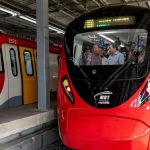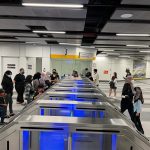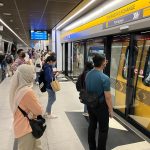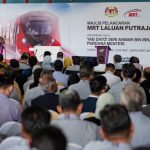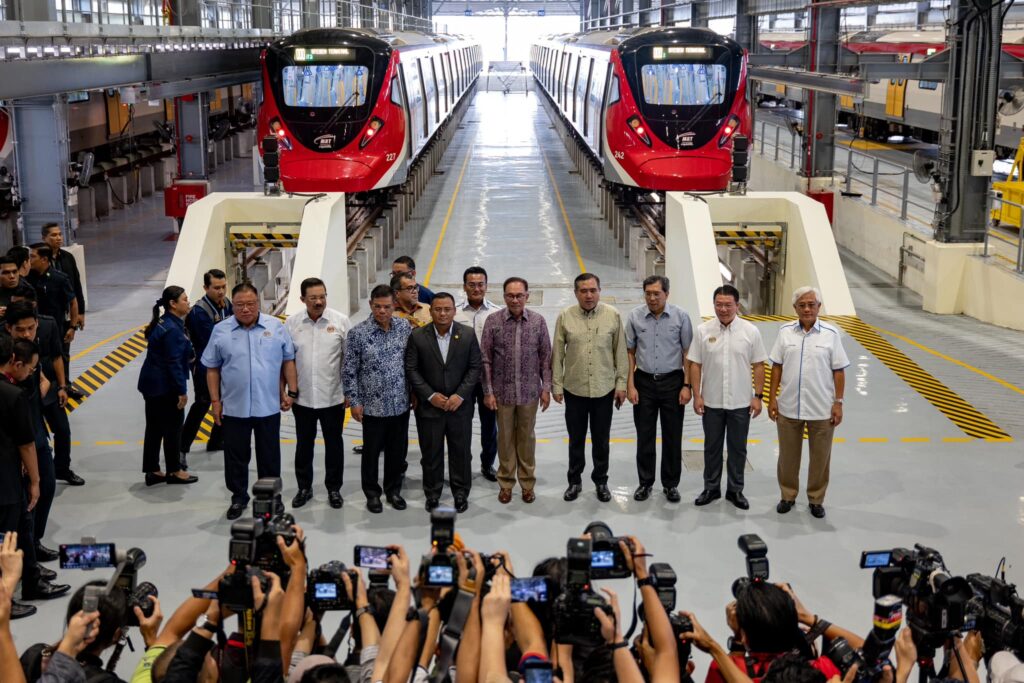 The Prime Minister of Malaysia Anwar Ibrahim has opened the second phase of Putrajaya Line between Kentonmen and Putrajaya Sentral. The official ceremony was held at Serdang depot on March 16.
The Prime Minister of Malaysia Anwar Ibrahim has opened the second phase of Putrajaya Line between Kentonmen and Putrajaya Sentral. The official ceremony was held at Serdang depot on March 16.
This is the second phase of the new MRT covering 24 stations and the first 12-station MRT from Kwasa Damansara to Kampung Batu entered passenger service on 16 June 2022.
This is the second line of the Klang Valley MRT project in Malaysia’s Greater Kuala Lumpur region and is serving a corridor with a population of around 2 million people stretching from Kwasa Damansara, a new development area in northwest Kuala Lumpur and its southern suburbs, to Putrajaya, Malaysia’s federal administrative centre.
Under a contract, Alstom was responsible for the design, installation, testing and commissioning of a communications-based train control (CBTC) system using its advanced Cityflo 650 solution, as well as on-board signalling equipment for the fleet of 49 trains and two maintenance vehicles. Alstom also provided the signalling facilities for a new depot and a back-up control centre located at Serdang, as part of the line’s phase two opening. The company installed its second signalling system in the Klang Valley, while maintaining current operations of the Kajang Line (with Sungai Buloh and Kampung Selamat station migrated to the Putrajaya Line) throughout construction and testing, with no impact to availability or reliability of the system.
The 57.7 km line, consists of 44.2 km of elevated tracks and 13.5 km underground served by 36 stations, 27 of which are elevated and 9 underground. 17 stations along the line are equipped with park and ride facilities, with a total of 5870 spaces. The line has 10 interchange stations providing connections to the existing public transport in Greater Kuala Lumpur and was designed to allow links to the future lines. The interchange stations offer more seamless and accessible connections between northwest Kuala Lumpur, its southern suburbs, and Putrajaya, Malaysia’s federal administrative centre. The line is expected to serve over 104,000 passengers daily, further alleviating the traffic congestion while favourably making public transport a choice mode within Greater Kuala Lumpur region. The ridership is expected to improve the current chronic traffic congestion while significantly increasing the targeted modal share of 40% public transport use within Greater Kuala Lumpur region.
The Putrajaya Line project has been approved by the Malaysian Government in 2014 with final scheme approval in 2015. The ground-breaking ceremony for the construction of the line, was held in September 2016 and has entered operation according to project’s schedule.
The Klang Valley MRT project covers the construction of a MRT system comprising three lines. The first 46 km Kajang Line was opened in 2017 providing transport services from Kwasa Damansara, in the north-west of Kuala Lumpur, running through the city-centre of Malaysia’s capital city before ending in Kajang, a fast-developing town to the south-east of the city. A 9.5 km section is built underground beneath the centre of Kuala Lumpur while the rest of the alignment is elevated. The line has 29 stations, of which 7 are underground and is operated by trains with four cars with a total capacity of 1,200 passengers.
The Kwasa Damansara station is now the terminal station for both Kajang and Putrajaya Lines.
RTS Link between Johor and Singapore is another project of the MRT development in Klang Valley connecting Bukit Chagar in Johor Bahru (Malaysia) Woodlands North in Singapore. The 4 km rail line with two stations will provide a fast and efficient cross-border transport mode between the two countries. In Malaysia, the MRT will be 2.7 km long with one station and Singapore will be served by a 1.3 km section.
In December 2019, Malaysian state-owned company Mass Rapid Transit Corporation (MTR Corp) has established a subsidiary to develop and own the civil infrastructure for the Malaysian section. The line is designed to have a capacity of 10,000 passengers per hour, per direction and an expected ridership of about 40,000 passengers per day upon opening.
The line will have a maintenance facility and depot in Wadi Hana, Johor Bahru, and will be operated by RTS Operations (RTSO), joint venture created by Prasarana Malaysia Berhad and SMRT Corporation of Singapore.
The line is expected to enter passenger services in 2026 proving a 6-minute journey between the two destinations.
Share on:



